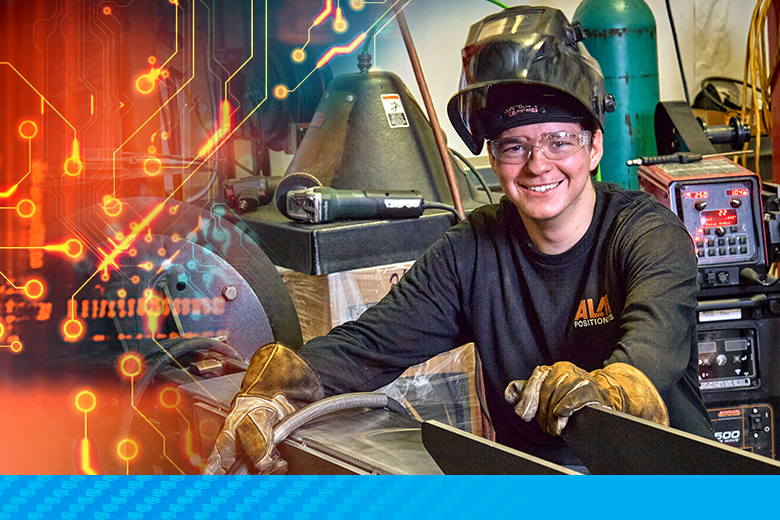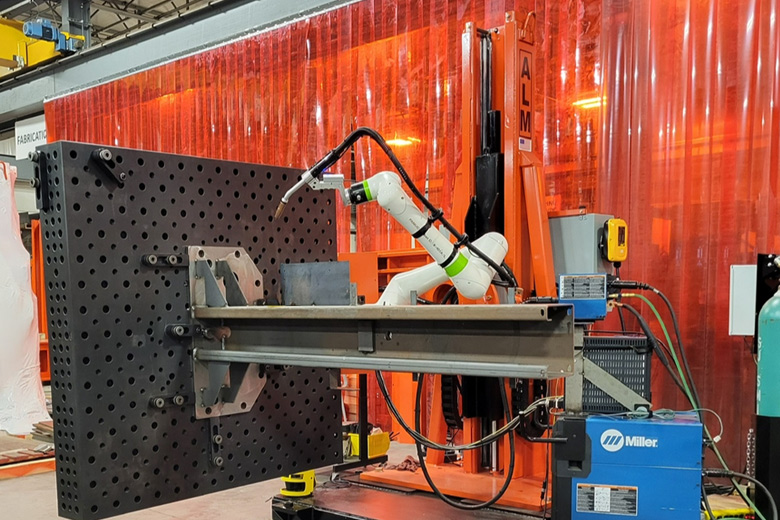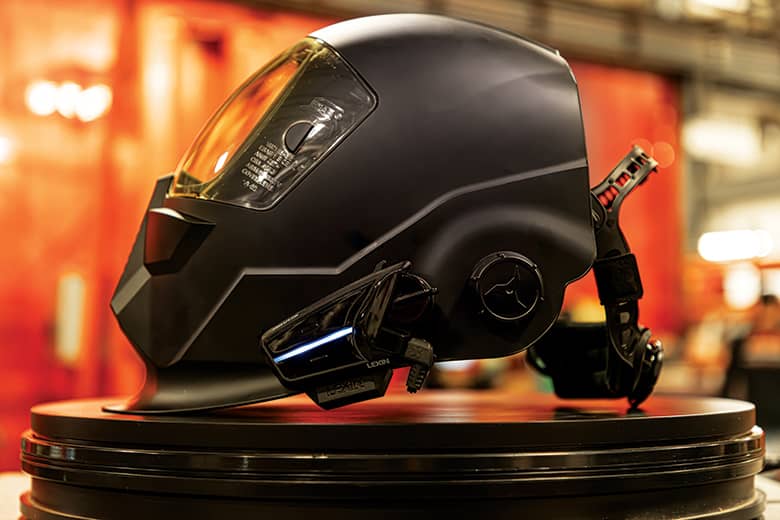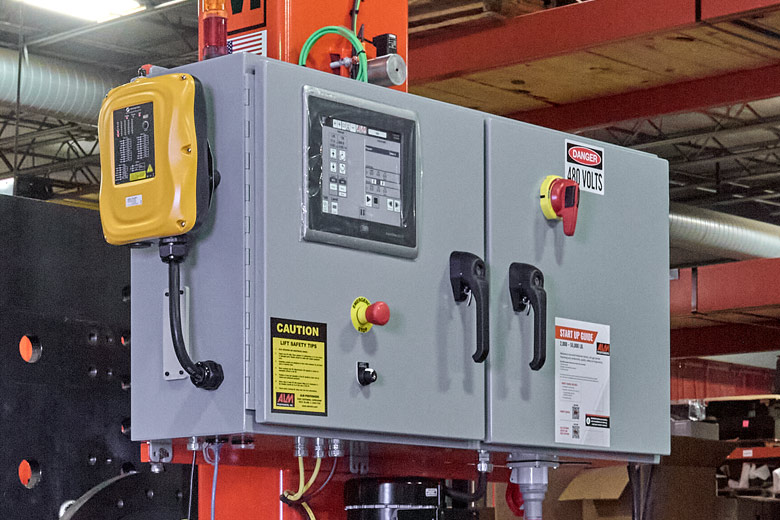“Given the challenges we have in the labor market, anything that improves efficiency and helps retain our workers is important to us. We’re now exploring other areas of our process that can benefit from a positioner.”
Brian Krzyaniak, Oertel Metal Works president
“Using the ALM positioner is a night and day difference for us. We can manipulate a 40-foot boat so much easier, which means we gain more efficiency and quality.”
Mike Henning, Lake Assault Boats Production Manager
“The positioner has improved everything across the board for us. Our team is nowhere near as fatigued at the end of the day because the positioner makes it so much easier to weld.”
Randy Lukesh, E-Pak Director of Operations
“Not only can our welders be consistently more efficient, but they can end each day without feeling worn out,” said Brian Krzyaniak, Oertel Metal Works president. “We can also eliminate the risk of injuries like carpal tunnel and serious burns.”
Brian Krzyaniak, Oertel Metal Works president
“We could see the immediate benefit the positioners were going to have. We were able to save time and increase productivity while making our process safer.”
Jeff Onsrud, C.R. Onsrud Director of Business Development
“ALM views our gain as their gain. They’re constantly adding value.”
Niels Heerema, Walinga Department Manager of Manufacturing and Industrial Engineers
"Our world is about being more efficient, controlling our costs and quite simply, supplying better products. ALM positioners are the tools that can help us get there."
Todd Malcolm, COO at Prairie Machine
”With the positioner, we’ve eliminated handling time and the use of overhead cranes. That makes our process a lot safer and more efficient.”
Mark Schutt, Schutt Industries Production Manager
“We’re saving money in our fabrication shop and then passing those savings onto our machine shop because we’re working so efficiently. That ultimately means we’re creating a better product for our customers, which is always our goal.”
Eric McAllister, C.R. Onsrud Fabrication Manager
“The positioner makes everyone on the floor want to use it.”
Mark Schutt, Schutt Industries Production Manager
“The guys out in the shop feel much safer using the positioners instead of a crane. Plus, using positioners frees up the overhead crane for other parts of the facility and that in itself is another bonus.”
Joe Nara, Komatsu Sales Service Manufacturing Coordination Manager
“ALM has shown us time and time again they’re our partner.”
Niels Heerema, Walinga Department Manager of Manufacturing and Industrial Engineers
"Thank you to the team at ALM. You folks have always had a quick and thorough response to our needs at Lake Assault Boats. It is greatly appreciated while we work towards staying on our demanding production schedule."
Jack Sigafus, Lake Assault Boats Production Manager
“Our efficiency has gone up. The employees are more relaxed, and they can go home and have the energy to engage with their families. That’s important to us.”
Emir Avdić, Sebright Products COO
“We use these positioners as a part of our selling strategy. We love bringing our customers into our facility to show them how the frame is coming out, and they are instantly impressed.”
Joe Nara, Komatsu Sales Service Manufacturing Coordination Manager
“The more comfortable our welders are, the faster they can learn and the better they’ll perform in the long run.”
Mike Henning, Lake Assault Boats Production Manager
“We give our team the best tools to succeed, which is why we went with the positioners from ALM.”
Eric McAllister, C.R. Onsrud Fabrication Manager
"Our guys don't have to strain their backs, bend over or crawl to make their weld. We've found that being more comfortable means they're also more productive."
Todd Malcolm, COO at Prairie Machine
"The positioner brings the weld to you. It allows us to have a lot less walking, a lot less climbing around and a lot happier team members at the end of the day. That’s huge for us."
Randy Lukesh, E-Pak Director of Operations
“Safety is a huge aspect of why we utilize positioners. Now, our welders don’t have to sit on carts or crawlers and move under the weld. They don’t even have to bend over to make a weld. It literally makes it so that you don’t have to break your back.”
Emir Avdić, Sebright Products COO
“The biggest thing for us has been the safety value. Our staff feels a lot more comfortable using this system. And when they’re comfortable, they’re able to make a stronger, more uniform weld. That’s huge for us.”
Eric McAllister, C.R. Onsrud Fabrication Manager
“After our first production run with the positioner, we ordered four more. Over time, it’s proven to increase our efficiency between 32 and 52 percent. Even more important, it makes our employees safer.”
Emir Avdić, Sebright Products COO
“The positioner has allowed us to hit our delivery dates sooner, which is a win for everyone.”
Mike Henning, Lake Assault Boats Production Manager
“Having the positioners here and making sure our employees are safe has really gone a long way.”
Emir Avdić, Sebright Products COO
“Safety was one of our very first considerations when we began looking at positioners. We were flipping very heavy trailer frames, and we needed to keep the safety of our employees as our first priority.”
Mark Schutt, Schutt Industries Production Manager






